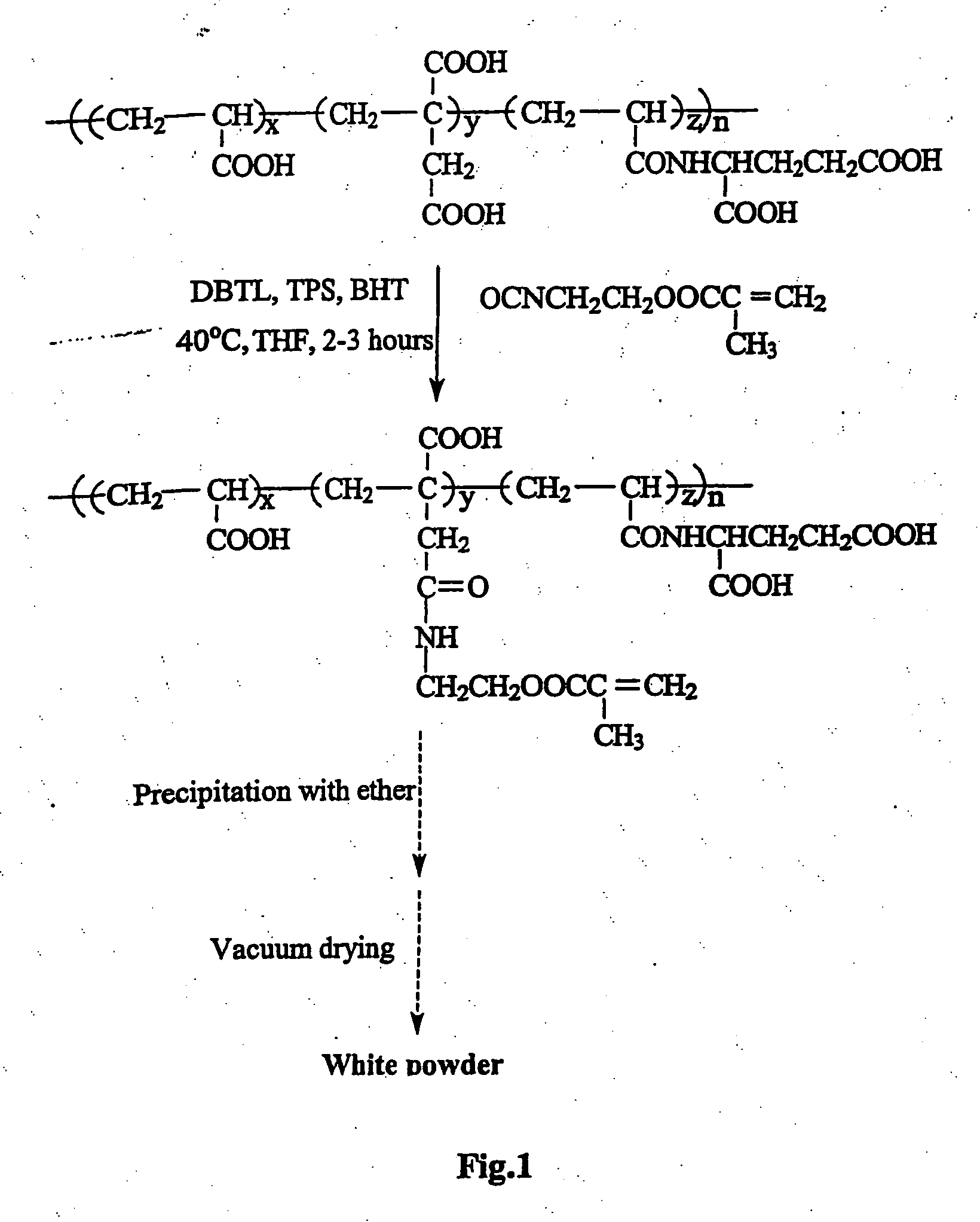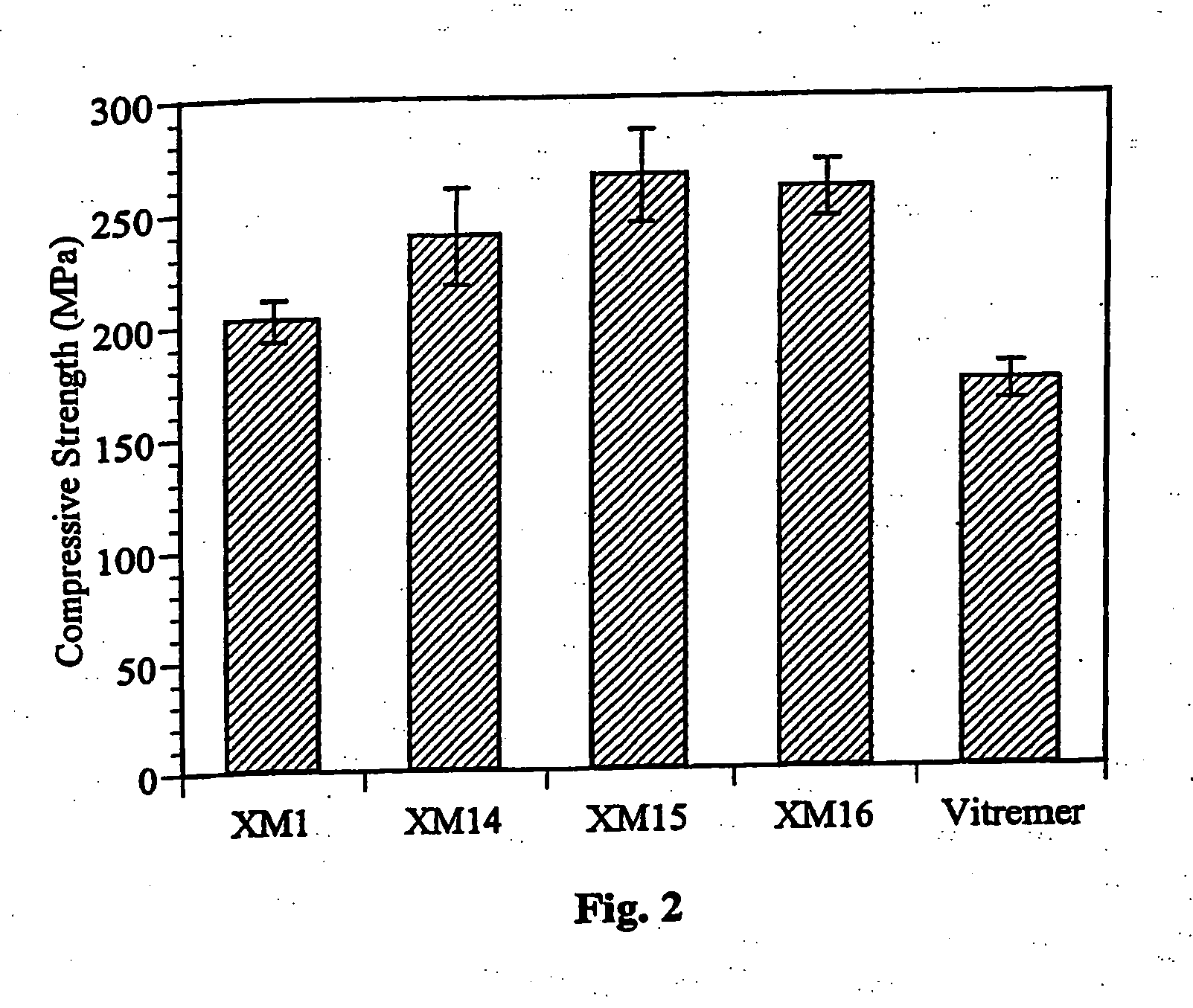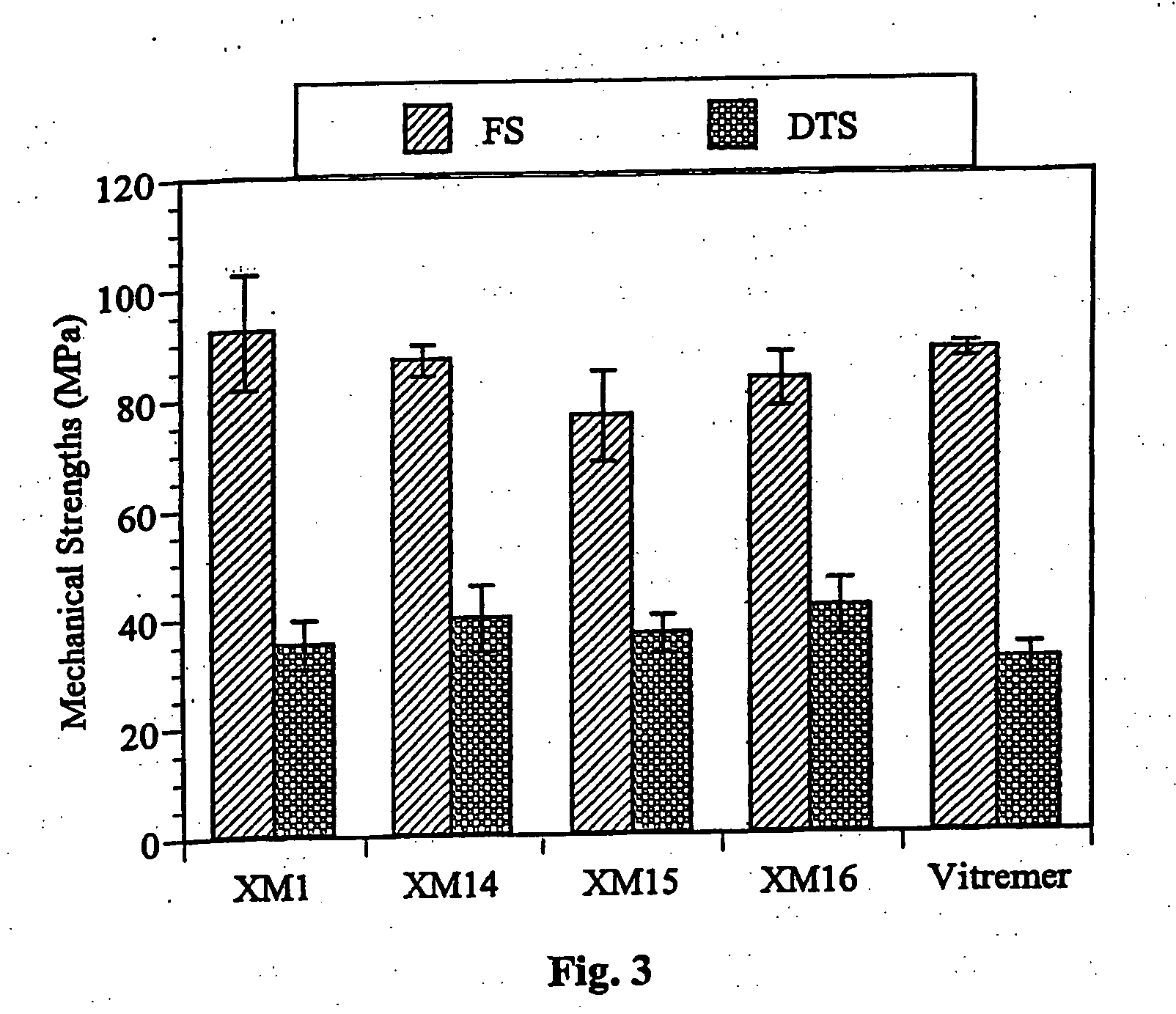Glass-ionomer cements containing amino acids
a technology of glass-ionomer cement and amino acids, which is applied in the field of glass-ionomer cements containing amino acids, can solve the problems of limited use of current conventional glass-, insufficient polymer matrix, and insufficient literature reporting further developments in orthopaedic applications of glass-ionomer cements, etc., and achieves low polymerization shrinkage and exotherm, improved biocompatibility, and reduced cytotoxicity.
- Summary
- Abstract
- Description
- Claims
- Application Information
AI Technical Summary
Benefits of technology
Problems solved by technology
Method used
Image
Examples
example 1
Synthesis of Methacryloyl L-glutamic Acid (MGA)
[0045] NaOH (60 g, 1.5 mol) was dissolved in 250 ml of water and cooled down to around 15° C. L-Glutamic acid (73.6 g, 0.5 mol) was then dissolved in the NaOH aqueous solution. To a three-neck flask, equipped with a thermometer and a mechanical stirrer, containing L-glutamic acid and NaOH aqueous solution, and cooled down to 0 to 5° C., methacryloyl chloride (48.9 ml, 0.5 mol) was added dropwise with vigorous stirring within about one hour while keeping the temperature below 5° C. An additional hour was allowed to complete the reaction after the addition was completed. The solution was acidified to pH=2 with a solution of concentrated HCl (37%) and distilled water (1:1, v / v), oversaturated with NaCl at room temperature, and extracted three to four times with warm ethyl acetate (50-60° C.). The extracted solution was separated using a separation funnel, dried with anhydrous MgSO4, filtered with a Buchner funnel, and concentrated using a...
example 2
Synthesis of Methacryloyl Glycine (MG)
[0046] The same procedure, as described in synthesis of methacryloyl L-glutamic acid, was utilized with glycine (37.5 g, 0.5 mol), NaOH (40 g, 1.0 mol), water (250 ml), and methacryloyl chloride (48.9 ml, 0.5 mol) to yield a white crystalline material. Needle-like and transparent crystals were obtained after recrystallization from warm ethyl acetate (50-60° C.).
example 3
Synthesis of Methacryloyl L-aspartic Acid (MASPA)
[0047] A similar procedure, as described in synthesis of methacryloyl L-glutamic acid, was utilized with L-aspartic acid (66.6 g, 0.5 mol), NaOH (60 g, 1.5 mol), water (250 ml), and methacryloyl chloride (48.9 ml, 0.5 mol) to yield a white slurry and viscous material. After being refrigerated overnight, white crystals precipitated out of the slurry material. The white crystals were dried under vacuum at 25° C. after washed using hexane.
PUM
| Property | Measurement | Unit |
|---|---|---|
| Mechanical strength | aaaaa | aaaaa |
| Mechanical strength | aaaaa | aaaaa |
| Mechanical strength | aaaaa | aaaaa |
Abstract
Description
Claims
Application Information
 Login to View More
Login to View More - R&D
- Intellectual Property
- Life Sciences
- Materials
- Tech Scout
- Unparalleled Data Quality
- Higher Quality Content
- 60% Fewer Hallucinations
Browse by: Latest US Patents, China's latest patents, Technical Efficacy Thesaurus, Application Domain, Technology Topic, Popular Technical Reports.
© 2025 PatSnap. All rights reserved.Legal|Privacy policy|Modern Slavery Act Transparency Statement|Sitemap|About US| Contact US: help@patsnap.com



